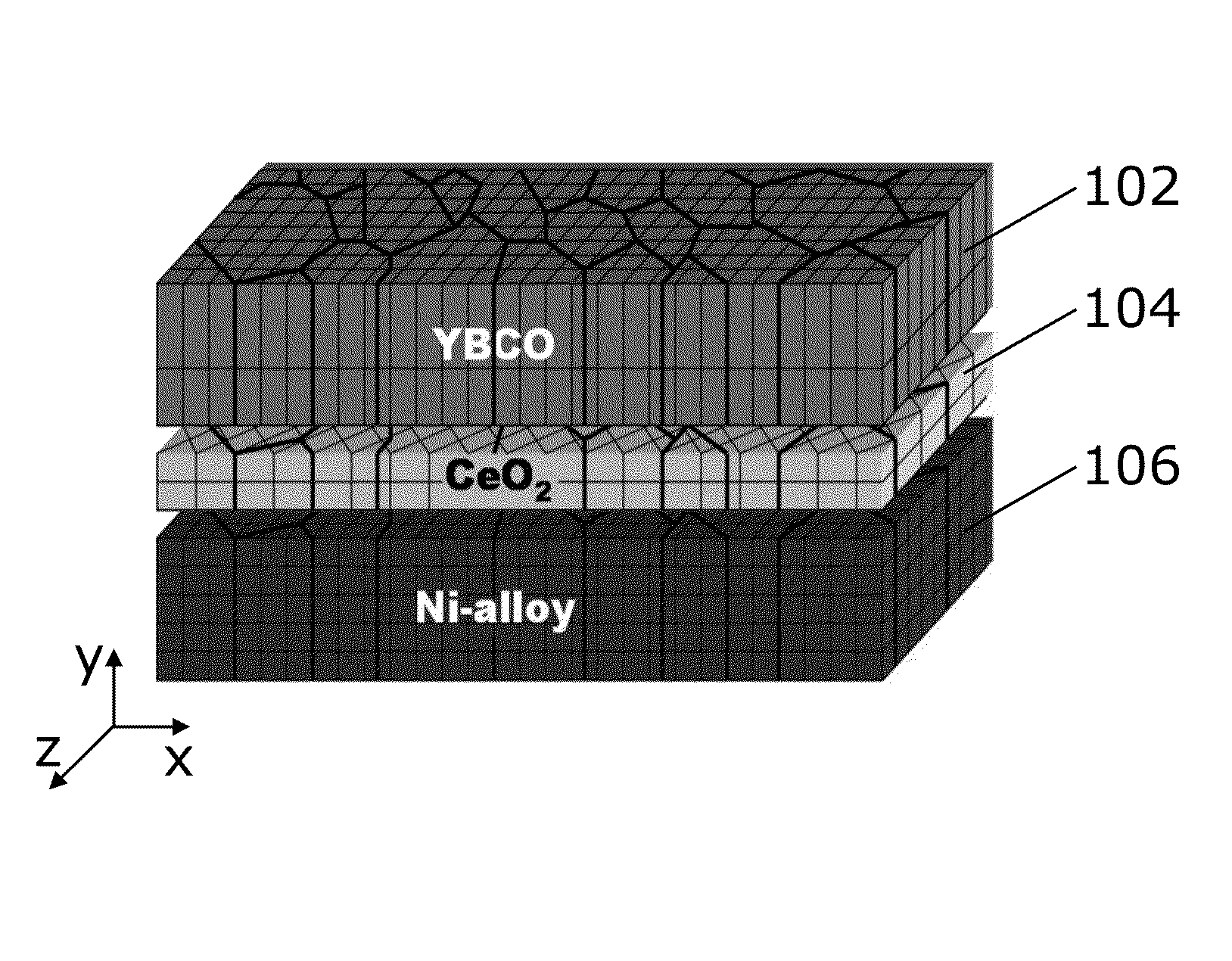Method for producing substrates for superconducting layers
a superconducting layer and substrate technology, applied in the direction of superconducting magnets/coils, superconductor devices, magnetic bodies, etc., can solve the problems of high losses when used in alternating current (ac) applications, inability to adapt the means of reducing ac losses that are currently available to process long lengths of superconducting tape, and inability to process long lengths of such tape in a straightforward manner. , to achieve the effect of high thermal condu
- Summary
- Abstract
- Description
- Claims
- Application Information
AI Technical Summary
Benefits of technology
Problems solved by technology
Method used
Image
Examples
example a
A1. Providing the Upper Layer: Surface Layer / Coating
[0149]The starting materials were commercially available Hastelloy C276 tapes, supplied annealed, and with a bright surface finish, from Stahlwerk Ergste Westig GmbH. The Hastealloy tape may be considered a primary solid element. Samples with typical dimensions; length ˜100 mm, width ˜10 mm and thickness ˜0.1 mm, were cleaned in an ultrasonic bath using a mixture (10:1) of acetone and ethanol for 25 min, then dipped in ethanol, dried with compressed air. The samples were subsequently heat treated at 800-1000° C. for 3 h in an open tube furnace equipped with a fan in order to supply sufficient amounts of new air while growing a surface layer / coating (oxide / nitride). The surface layer may be considered the upper layer. A quartz-based holder enabled an upright positioning of the sample so that none of the tape sides, i.e., the two sides being parallel with a plane of the tape, were in contact with the sample ...
example b
‘Coating-Roll-Etched’-Tapes
B1. Surface Layer / Coating
[0167]See section A1.
B2. Rolling / Disruptive Lines
[0168]A special set of profile-rolls were applied when producing disruptive lines in this method and a schematic drawing of the rolls is shown in FIG. 15.
[0169]FIG. 15 is a schematic drawing showing an upper roll 1516, being an upper profiled roller and a lower roller 1518. The height difference 1519 between the inner part of the curved part of the upper profiled roller and the edge of the curved part roll is 10 μm. Note that the drawing is not correctly scaled.
[0170]The coated tape was rolled manually without lubrication and at a low rolling speed as the rolls where driven using a set of Clyburn spanners (Swedish form). The PPR (per pass reduction) was approximately 1-20 micrometers. The speed of rolling was approximately 10 mm per second. Bright lines (indicating exposed areas) were apparent at the positions where the edge of the profiled roll had deformed the tape, and visible dur...
examples c
, D, E, F.
[0175]In general, Kapton® film may be applied as an extra step for all fabrication methods, such as in order to minimize final polishing if it is placed on the areas where no profiles, such as disruptive strips or exposed areas, are present.
PUM
| Property | Measurement | Unit |
|---|---|---|
| Thickness | aaaaa | aaaaa |
| Dimensionless property | aaaaa | aaaaa |
| Volume | aaaaa | aaaaa |
Abstract
Description
Claims
Application Information
 Login to View More
Login to View More - R&D
- Intellectual Property
- Life Sciences
- Materials
- Tech Scout
- Unparalleled Data Quality
- Higher Quality Content
- 60% Fewer Hallucinations
Browse by: Latest US Patents, China's latest patents, Technical Efficacy Thesaurus, Application Domain, Technology Topic, Popular Technical Reports.
© 2025 PatSnap. All rights reserved.Legal|Privacy policy|Modern Slavery Act Transparency Statement|Sitemap|About US| Contact US: help@patsnap.com



